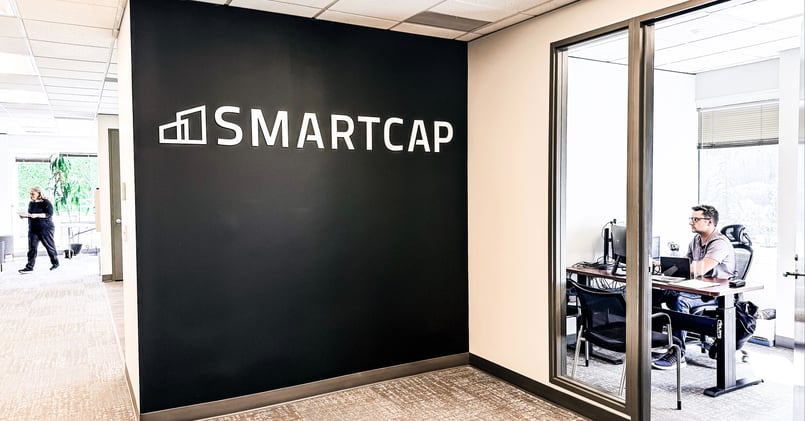
In an era marked by growing environmental awareness and corporate responsibility, sustainable practices have become a fundamental consideration in the world of commercial real estate, particularly in office buildings. Sustainability isn't just a buzzword; it's a critical factor that influences investment decisions, tenant attraction, and the overall value of office properties. In this comprehensive article, we will delve into the importance of sustainable practices in office buildings, the significance of LEED certifications, and how these factors impact the investment value of commercial real estate.
The Growing Importance of Sustainability in Office Buildings
Sustainability in office buildings encompasses a wide range of practices and features designed to reduce environmental impact, enhance energy efficiency, and create healthier, more productive work environments. The growing importance of sustainability in the office real estate sector can be attributed to several key factors:
- Environmental Responsibility
The urgency of addressing climate change and reducing carbon footprints has led businesses and investors to prioritize environmentally responsible practices. Office buildings are significant contributors to greenhouse gas emissions, making sustainability efforts crucial.
- Regulatory and Compliance Factors
Governments and regulatory bodies worldwide are implementing stricter environmental standards and building codes. Compliance with these regulations is not only a legal requirement but also a necessary aspect of future-proofing office properties.
- Tenant Demand
Tenants are increasingly seeking office spaces that align with their sustainability goals and values. Green office buildings have a competitive edge in attracting and retaining tenants, especially those committed to corporate social responsibility.
- Health and Productivity
Sustainable features such as ample natural light, improved air quality, and ergonomic designs contribute to the health and well-being of office occupants. Healthier and more comfortable work environments can lead to increased employee productivity and satisfaction.
- Cost Savings
Sustainable practices often result in significant cost savings over the long term. Energy-efficient building systems, water conservation measures, and reduced maintenance requirements can lower operational expenses for property owners.
Understanding LEED Certification
One of the most recognized and respected sustainability certifications in the commercial real estate industry is Leadership in Energy and Environmental Design (LEED). Developed by the U.S. Green Building Council (USGBC), LEED certification evaluates buildings based on their environmental performance and sustainable features. The LEED rating system assigns points across several categories, including sustainable site development, water efficiency, energy performance, indoor environmental quality, and innovation in design.
LEED certification comes in various levels, including Certified, Silver, Gold, and Platinum, with Platinum being the highest achievable level. To earn LEED certification, a building must meet specific criteria and demonstrate a commitment to sustainability and energy efficiency.
How LEED Certification Impacts Investment Value
Investors and property owners often wonder how LEED certification can impact the investment value of office buildings. The benefits are multifaceted and extend beyond mere environmental considerations:
- Enhanced Marketability
LEED-certified office buildings are more marketable and attractive to a broader range of tenants. Businesses that prioritize sustainability in their operations seek office spaces that align with their values, and LEED certification provides a tangible demonstration of a building's commitment to green practices.
- Competitive Advantage
LEED certification provides a competitive advantage in the commercial real estate market. Certified buildings stand out in a crowded marketplace, potentially commanding higher rental rates and attracting premium tenants.
- Reduced Operational Costs
LEED-certified buildings are designed to be energy-efficient and environmentally responsible. This results in lower utility bills, reduced maintenance costs, and increased operational efficiency, all of which positively impact the bottom line for property owners.
- Stronger Tenant Relationships
Sustainability initiatives and LEED certification can foster stronger relationships with tenants. Tenants in green buildings often report higher levels of satisfaction, leading to longer lease agreements and reduced tenant turnover.
- Future-Proofing
As environmental regulations become more stringent, LEED-certified buildings are better positioned to meet evolving compliance requirements. This "future-proofing" aspect enhances the long-term value and sustainability of the investment.
- Attracting Responsible Investors
Investors with a focus on sustainability and responsible investing are more likely to show interest in LEED-certified properties. This can expand the pool of potential buyers or partners when considering investment opportunities.
Real-Life Success Stories
To illustrate the tangible impact of LEED certification on investment value, let's explore a few real-life success stories:
- Empire State Building, New York City
The iconic Empire State Building underwent a massive retrofitting project to achieve LEED Gold certification. The improvements led to significant energy savings, reducing annual energy consumption by 38%. This not only reduced operational costs but also increased the building's marketability and investment value.
- Salesforce Tower, San Francisco
Salesforce Tower, a LEED Platinum-certified skyscraper, boasts advanced sustainability features, including a rainwater harvesting system, on-site renewable energy generation, and advanced HVAC systems. These green features have contributed to its appeal to tech giants and innovative businesses, driving up its market value.
- PNC Tower, Pittsburgh
The PNC Tower, known for being one of the greenest skyscrapers in the world with LEED Platinum certification, has become a symbol of sustainable architecture. Its green initiatives, such as a green roof, natural ventilation, and energy-efficient design, have attracted both tenants and investors, enhancing its investment value.
Conclusion: A Win-Win Proposition
Sustainable practices and LEED certification have evolved from being purely environmental initiatives to becoming pivotal factors in the office real estate investment landscape. The adoption of green building practices not only aligns with environmental responsibility but also offers tangible benefits such as reduced operational costs, increased marketability, and enhanced tenant satisfaction.
As businesses and investors increasingly prioritize sustainability, office buildings with LEED certification stand to reap the rewards of higher rental income, lower operating expenses, and improved long-term asset value. By investing in sustainable practices and pursuing LEED certification, property owners and investors can create a win-win proposition: a thriving, environmentally responsible office building that delivers value to both the environment and their portfolios.
TAGS: Musings
